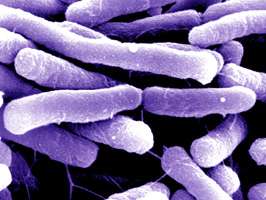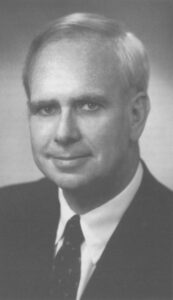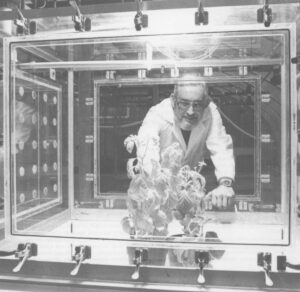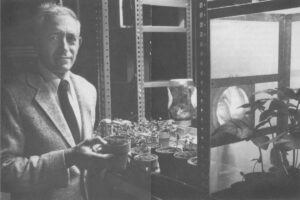
Good Germs Gone Bad
To work in Abigail Salyers’ laboratory at the University of Illinois, is to play matchmaker to some unlikely couples. Standing at her laboratory bench, PhD student Kaja Malanowska lifts the cover from a petri dish to pick up a half a billion or so Escherichia




